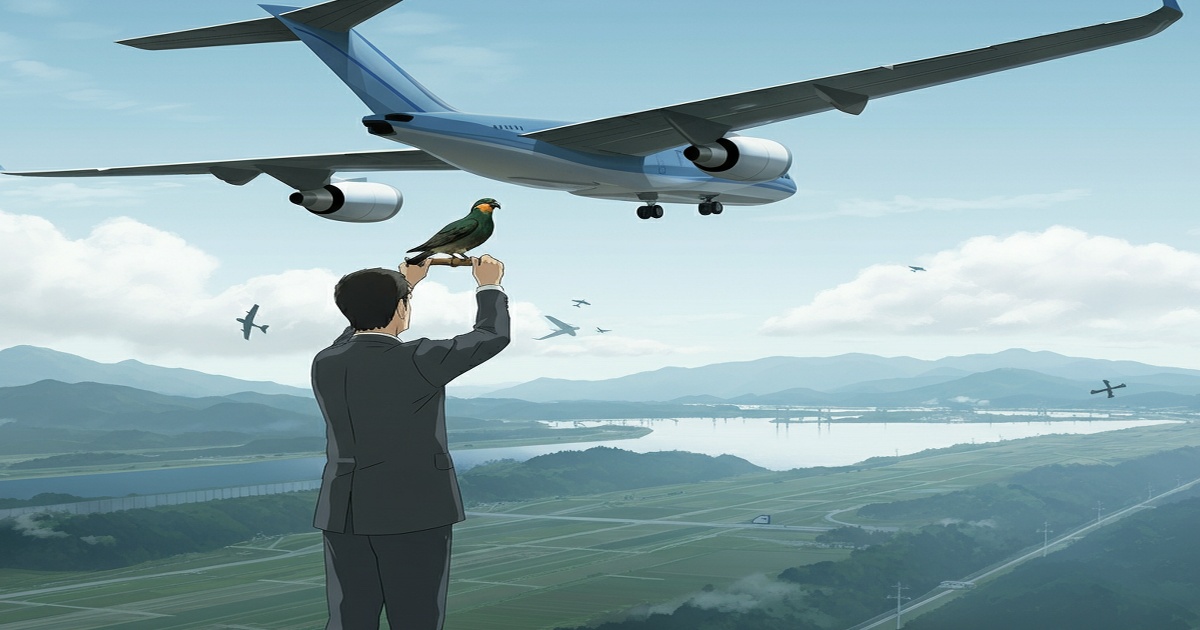T.M. Works, a modest auto parts manufacturing company located in Yamanashi Prefecture, has introduced a groundbreaking bird repelling device that has piqued the interest of the aviation sector. This innovative device aims to keep birds away from runways and aircraft to mitigate the risks of bird strikes, which can result in severe accidents or power loss for planes. Already successful in trials at nine airports across Japan, this device has been adopted for extensive use at several locations.
Bird strikes pose substantial dangers, particularly when a bird is ingested by a plane's engine. T.M. Works expressed hope that their creation could contribute to enhancing safety and potentially saving lives. The technology works by emitting high-frequency sounds that are unpleasant to birds, effectively covering an area of approximately 200 meters when installed around runways.
At Tottori Airport, the presence of crows near the runway was monitored, revealing a decrease from 1,568 birds observed in fiscal 2023 to just 1,270 after the device's implementation in fiscal 2024, marking a 20% reduction. President Hideaki Todoroki remarked on his surprise at entering the aviation market, which he had not anticipated.
The breakthrough for T.M. Works occurred in 2018 with the development of a device designed to repel deer, prompted by issues of deer-related car accidents near Mt. Fuji. Following this, the company received numerous orders from the railway industry to address similar collision concerns. Inspired by this success, they adjusted the frequency of their device to tackle other animals, leading to significant results in a local neighborhood plagued by crows.
The positive impact expanded beyond local efforts. When the device was used at a nori seaweed farm in Okayama Prefecture in 2021, it reportedly resulted in a 30% reduction in damage caused by ducks. With an annual average of over 1,300 bird strikes reported at domestic airports over five years, the reputation of T.M. Works’ device quickly spread through word of mouth across the aviation community.
In March 2023, Iwami Airport in Shimane Prefecture became the first in Japan to install this device, a move that paved the way for its trial at nine other airports, including Chubu Airport. Following its installation at Kansai Airport in March 2024, there were notable declines in both bird sightings and strikes, leading to its broader adoption in early June. An airport official expressed optimism that the device would bolster safety and reduce flight delays.
Looking ahead, Todoroki envisions expanding the potential applications of the device, particularly in poultry farming, where it could assist in preventing bird flu by keeping wild birds away from chicken coops.







5 Comments
Coccinella
Sounds like airport bureaucracy. They will use this as a "necessary solution".
Raphael
Another device adding to the over-reliance on machinery when nature causes problems.
Bermudez
20% reduction in bird sightings at an airport? That's impressive and helps mitigate danger.
Coccinella
Deer repelling? Now they're in the aviation industry? Feels like a leap with no grounding and some dubious history.
ZmeeLove
Another gadget for the airport? How about fixing the real problems, like flight delays caused by understaffing!